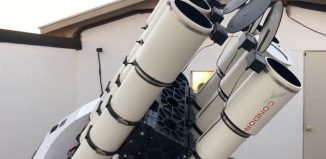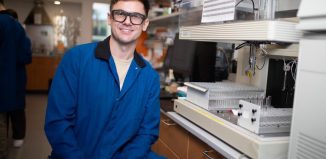CSHL’s Ware looks to crack plant code
Doreen Ware brings her work home with her. Then again, her work is everywhere. An adjunct associate professor at Cold Spring Harbor Laboratory, Ware studies large sections of plant genes and the way those genes affect what a plant becomes.
With the world’s population continuing to increase and the type of land for farming crops that will provide food under various conditions of stress, the urgency to find and harness the best combination of plant genes is building. “In the U.S. right now,” she said, “more than 50% of the agricultural land has been under drought conditions.”
Ware, a computational biologist in the Department of Agriculture, is involved in her own experiments with plants and helps create tools to understand the wealth of information coming from other people’s basic genetic research.
Her group is focused on understanding regulatory networks, or the genes that control the level of expression of other genes. Specifically, she studies microRNAs and transcription factors, which are protein-coding genes that bind to DNA to promote or repress gene expression. She described part of her work as “setting up resources that other people can use to do their own work. I’m a firm believer that supporting many people will bring out more product than my group can do.”
Ware is a co-principal investigator on iPlant, which is as an entity that is by, for and of the community, according to its website. She is also the administrative lead for the Cold Spring Harbor effort on iPlant.
Part of the original iPlant Collaborative grant that started in 2008, Ware and her lab members “provide scientific support for several of our collaborations in genome-wide studies,” said Steve Goff, the project director and principal investigator for iPlant.Ware said comparing genes across different plants helps scientists understand which code is responsible for a plant’s responses to changes in its environment.
Ware likened the process of understanding how to optimize different genes in her work to designing a bicycle. Bikes all use the same underlying parts, although some work better in mountains while others, like tricycles, are designed for stability.
“My group is focused on understanding which sets of parts might be important in developmental outcomes, which parts are important to environmental outcomes and which contribute to both,” she said. The conditions she examines range from less potable water to limited supplies of nitrogen and phosphorus. Unlike mammals, plants make their parts as they go through their lifestyle, in response to sunlight or other cues, signaling cells to flower or to go into dormancy or die.
In her lab, Ware has seen some results that surprised her. She was looking at two maize plants that looked identical. The regions in between the genes didn’t look similar when she looked at their exact location. “The DNA between the genes in many cases are different,” she explained. “This DNA may be regulatory” and will introduce “flexibility” differences in how and when the genes will be expressed. “When you see that they are this different, it’s pretty amazing,” she said.
Her colleagues have offered a similar adjective to describe Ware herself. “Understanding both computational analysis and plant biology is a rare combination that [Ware] and her team bring to the iPlant Collaborative,” Goff explained. “Many people in the agricultural research fields, both applied and academic, seek to benefit from [her] knowledge and reputation.”
Ware and her husband, Joseph Lanzone, a software quality engineer, live in Melville. She has a 21-year-old son, William, and an 8-year-old son, Marc. Long Island appeals to her because she likes “all water activity,” which includes sailing and heading to beaches.
At home, she has trees and flowers that bloom all year-round, giving her “something beautiful to look at” during each season. Ware also regularly attends services at her church, St. Elizabeth of Hungary.
As for her work, she turns to an old saying: You can give people a fish and feed them for a day or you can teach people to catch fish and feed them for a lifetime.
“From my perspective, I want to teach them to farm the fish,” she said.






